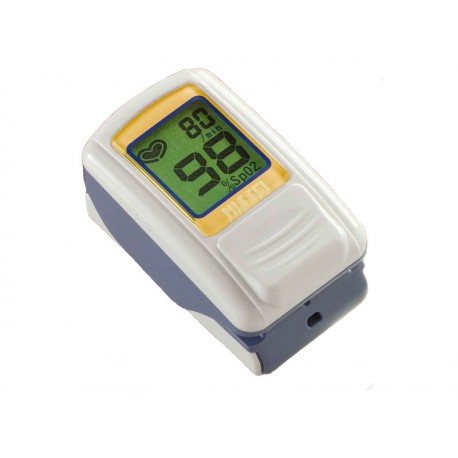No products
 View larger
View larger
Nissei BO-750 Fingertip Pulse Oximeter
Ni-BO-750
New product
Nissei Finger Tip Pulse Oximeter B0-600. Displays % SpO2 and Pulse Rate
To pay by BACS please email a purchase order to Fitech Sales Order Team
More info
Key Features
- Measure SPO2 anytime, anywhere.
- Water Resistant
- Automatic power on/off with insertion or removal of fingertip
- Reliable and accurate measurement of SPO2 and pulse
- Pulse indication
- Large backlit LCD display
- Approx 40 hours of use from 2 x AAA batteries(4800 times of 30-second-spot measurements
- Range of finger sizes for approx 40-75mm
- Dimensions(LxWxH): 58x35x32mm
- Weight(without batteries): approx 35g
- Measurement range: SPO2: 0-100%, Pulse: 30 to 240bpm
- Supplied with 2 x AA batteries and neck-strap / lanyard and 2 year warranty
What does SpO2 mean?
SpO2 stands for peripheral capillary oxygen saturation, an estimate of the amount of oxygen in the blood. More specifically, it is the percentage of oxygenated haemoglobin (haemoglobin containing oxygen) compared to the total amount of haemoglobin in the blood (oxygenated and non-oxygenated haemoglobin).
SpO2 is an estimate of arterial oxygen saturation, or SaO2, which refers to the amount of oxygenated haemoglobin in the blood.
Haemoglobin is a protein that carries oxygen in the blood. It is found inside red blood cells and gives them their red colour.
SpO2 can be measured by pulse oximetry, an indirect, non-invasive method (meaning it does not involve the introduction of instruments into the body). It works by emitting and then absorbing a light wave passing through blood vessels (or capillaries) in the fingertip. A variation of the light wave passing through the finger will give the value of the SpO2 measurement because the degree of oxygen saturation causes variations in the blood’s colour.
This value is represented by a percentage and in healthy people, normal SpO2, or blood oxygen saturation levels, should range from 94 to 99 percent. For a person with a mild respiratory disease, the value should be at least 90 percent.


